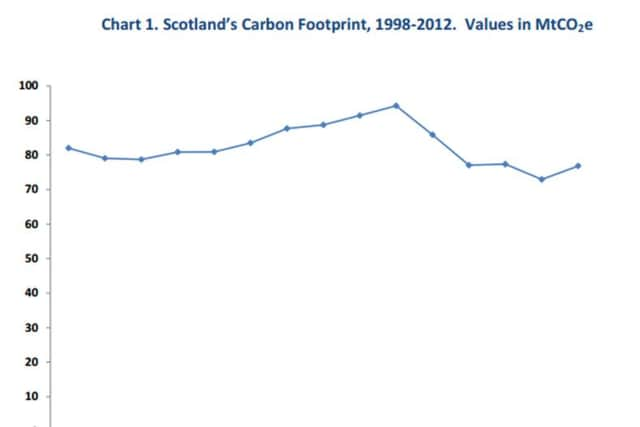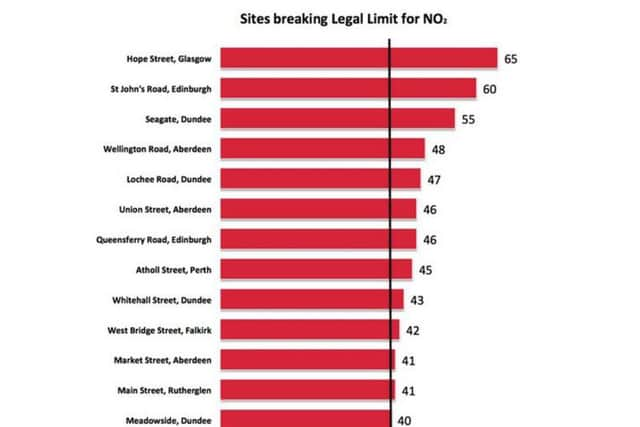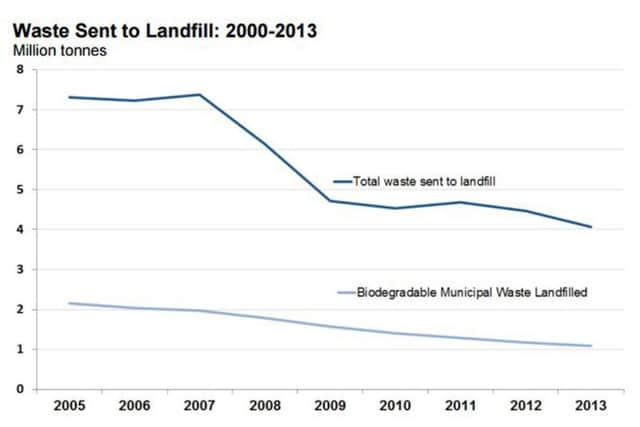In numbers: How green is Scotland?


Scotland is famous around the globe for its unspoilt, rugged wilderness but beyond the postcard scenery how green is the country really? To find out lets examine several key environmental indicators to get an overview of just how clean the nations is.
CARBON FOOTPRINT
A country’s carbon footprint refers to the amount of greenhouse gases (such as carbon dioxide) that are released into the atmosphere by its citizens each year. The footprint is measured by looking at how many millions of tonnes of these gases Scotland produces.


Advertisement
Hide AdAdvertisement
Hide AdThe latest data from the Scottish Government revealed that between 1998 and 2012 Scotland’s carbon footprint (emissions from all greenhouse gases) fell by 6.3 per cent Fit dropped from 82.0 million tonnes carbon dioxide equivalent (MtCO2e) in 1998 to 76.8 MtCO2e in 2012.
However if we look closer at CO2 emissions over this time period an obvious factor emerges as the reason for the carbon footprint decline.
From 1998-2007 Scotland’s carbon footprint rises steadily to peak at 94.3 MtCO2e. This echoes a trend for the wider United Kingdom where greenhouse emissions peaked in 2007 also at a huge 1,091 million tonnes of carbon dioxide equivalents ( a sixth of what powerhouses China and USA produced individually in 2007).
We see a large drop in Scotland’s emissions after 2007 as the Global Financial Crisis hits and industry suffers as consumer demand drops and people spend less on luxury goods. However as the economy has slowly began to recover we see an increase in CO2 emissions from 2011.


Commenting on the figures, Friends of the Earth Scotland Director Dr Richard Dixon said:
“As the economy has recovered our carbon footprint has shot up again by 5.3 per cent in just one year from 2011-12. If we are serious about cutting our carbon footprint we need to buy less stuff, buy more locally, get help with making our homes more energy efficient and switch to public and active transport.”
AIR POLLUTION
No less than five of Scotland’s six cities contained streets with levels of the poisonous gas, Nitrogen Dioxide, higher than the legal limit in 2014.


Inverness was the only city to not have any streets that contained the Ntrogen Dioxide (NO2) which the World Health Organisation has linked to increased mortality and respiratory illness.
Advertisement
Hide AdAdvertisement
Hide AdUsing data from Scottish Air Quality, Friends of the Earth Scotland compiled the 13 dirtiest streets in Scotland in terms of NO2 levels that were above the safe, legal limit. Dundee had the dubious honour of containing four of the streets on the list and Hope Street in Glasgow was the most polluted street in the country with NO2 levels far exceeding the legal limit.
Public Health England found that in 2014 alone over 2000 people died from air pollution linked conditions in Scotland (22,500 UK wide).
LANDFILL WASTE AND RECYCLING
Reducing landfill waste is one of the key areas that the Scottish government must make significant progress if it is to meet its 2020 climate change targets. Landfill waste is more than just a malodorous eyesore, waste such as paper, food and garden waste emit methane, a greenhouse gas with 34 times more global warming potential than carbon dioxide.
The Scottish Environment Protection Agency (SEPA) recorded that landfill waste in Scotland has steadily decreased from 2005 to 2013 as Scots begin to recycle more of their household waste. Landfill waste decreased by 45 per cent over this eight year period and biodegradable waste fell by 50%.
As part of The Scottish Government’s Zero Waste Plan (2010), 70 per cent of all household waste is targeted to be composted or recycled by 2025. Real progress has been made in household recycling although at a somewhat slow pace. The household waste recycling rate in 2013 was 42.2 per cent, increasing from 41.2% in 2012 and 16.6 per cent in 2004.
Scotland remains roughly on par with the UK’s average household recycling rate of 43.9% (2012) but lags behind some of Europe’s top recyclers countries like Austria, (63 per cent) Germany (62 per cent), Belgium (58 per cent), the Netherlands (51 per cent) and Switzerland (51 per cent).